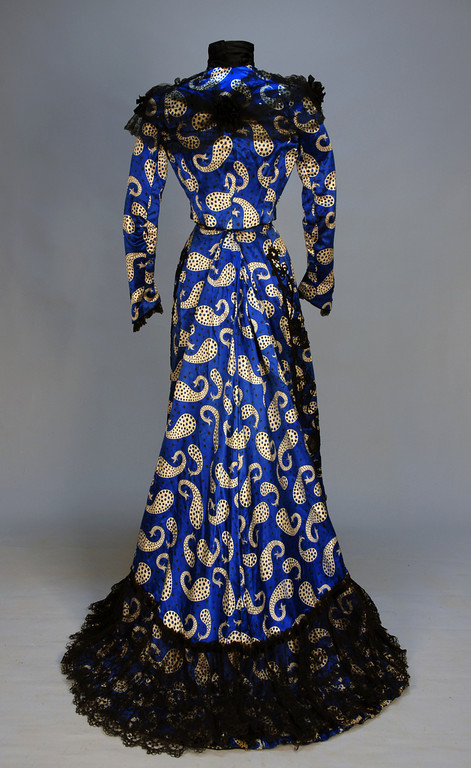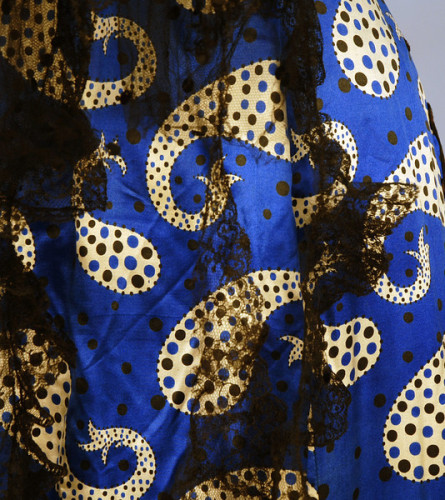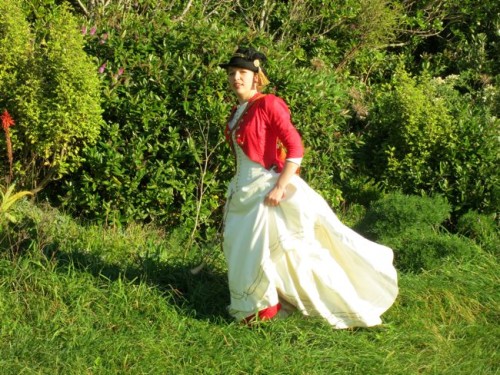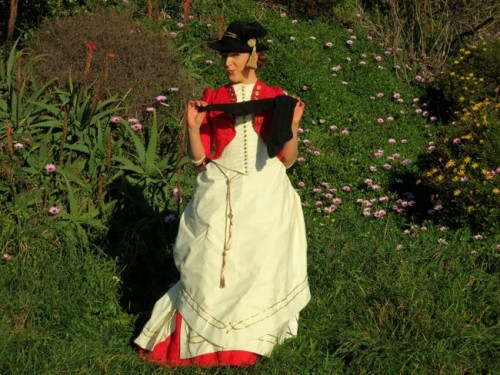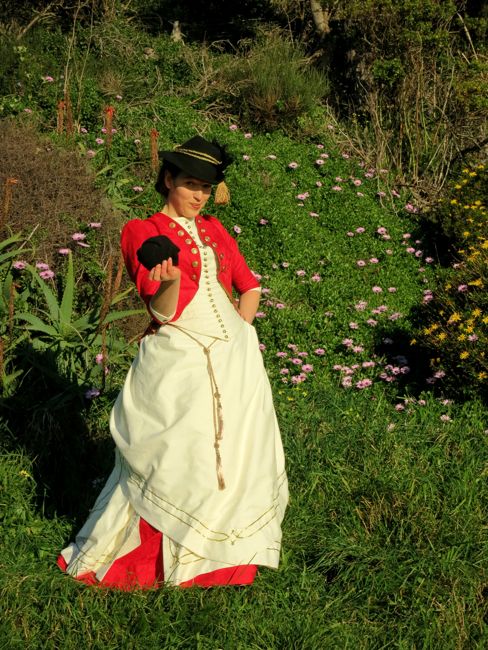Just in time for Halloween and the biggest costume celebration of the year, the Historical Sew Fortnightly Challenge # 22, due Monday November 4, is Masquerade.
Fancy dresses and Masquerades have been popular for centuries, both as very organised pageants that blended into theatre, and as balls where all organization and constraints were abandoned. Masquerades as pageants were about creating another world, and as balls symbolised an escape from your ordinary life, and the rules of society. In fancy dress, with your face covered by a mask, you could step out of yourself. The Queen had as much responsibility as a peasant girl, a peasant girl (in the right dress) could rub elbows with a queen.
In this challenge, be inspired by historical fancy dress and masquerade, go whole-hog in an elaborate allegory (or a hog costume, or a side of bacon costume, because those exist), or keep it simple with just a mask and a domino. Because masquerades were a loosening of the rules, and a step into a fantasy, the Historical Sew Fortnightly rules are a little looser, and this is a good excuse to make something that ventures into fantasy or an alternative universe. As long as your fantasy has some link to history, it counts.
To inspire you and get you thinking, here are a few historical examples of masquerades and fantasy worlds that fascinate me:
One of the most famous fancy dress balls ever is the Bal des Ardents, which almost killed a king, and certainly added to the instability of his court. Contemporary descriptions of the ‘Wild Men’ costumes of resin-soaked linen costumes covered in flax don’t sound very attractive, and the accounts of the tragedy are horrific, but illustrations of the costumes make them quite beautiful, green and lush with the unhappy addition of golden flames.
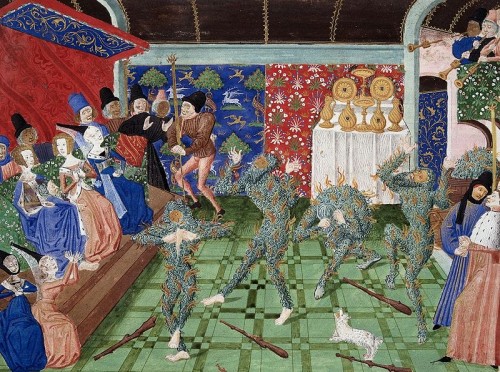
The Bal des Ardents depicted in a ca. 1470 miniature from Froissart’s Chronicles
I love the following outfit because it’s just so chic and elegant, and dare I say, minimalist. Exquisite!
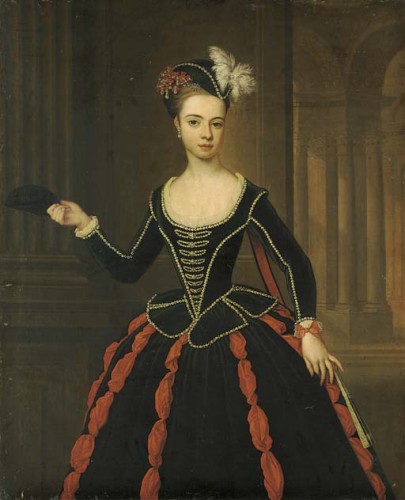
Portrait of the Hon. Mrs William Townshend in masquerade dress, 2nd quarter of the 18th century, by Thomas Gibson. Christies
How fabulous is this fancy dress costume from 1831? What is she supposed to be? A firebird? It’s all quite magnificent!

Fancy dress, La Moda magazine, 1831
The following costumes pretty much make me hyperventilate with their awesomeness. Not only do the fabulous masks include a hedgehog, but the regular clothes they are wearing are pretty swish. I don’t know how you walk or eat in them, but that doesn’t stop their amazingness!

“The Hare & the Hedgehog” fancy dress costumes, 1860s, from the Stadtmuseum, Germany
I love this fancy dress fashion plate because it lends credence to the whole idea of the Polly / Oliver dress. The Elizabethian and Polly’s 18th century soldier are quite obvious, but what is the girl in pink meant to be?

Fancy dress, 1877 La Mode Illustree, design by Adel Anais Tondouze
This costume involves a black cat. And roller skates. Naturally.

Black cat costume (with roller skates), 1880. via Retronaut
(actually, random costumes paired with roller skates seems to have been a thing, because I’ve seen a dozen other images of Cavelier boys and little witches and Romeos in roller skates.)
I love this “Scrap Album” costume. It is so perfectly of its time, so unique, and so brilliantly made!
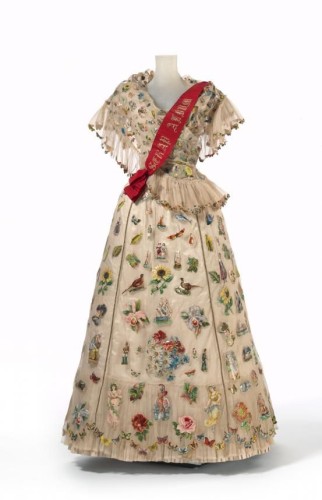
“Scrap Album” fancy dress. Circa 1893, Made of silk, cotton, linen, paper, glue, metal (fastening), wood, leather, baleen, wax, and paint, England. Madame Gough, London (court dressmaker), Sarah Ann Gough (designer) National Gallery of Victoria
Speaking of scraps, have you ever seen such an elegant Waste Paper Basket? Simple, but brilliant!

Wastepaper basket, 1896
How amazing are these costumes? The thistle (what on earth would you make the headdress out of?)! The climbing rose! The one in the middle is a Japanese garden (which is somehow so much more novel, and less dreadful, than the usual stereotypical national costume masquerade outfits)

Fancy dress, 1920s
If you are in need of more inspiration, mine Fancy Dress through History board is only one of a number of fantastic pinterest boards dedicated to masquerade dress – there is no end to the fabulous, wacky, inventive ideas out there.

